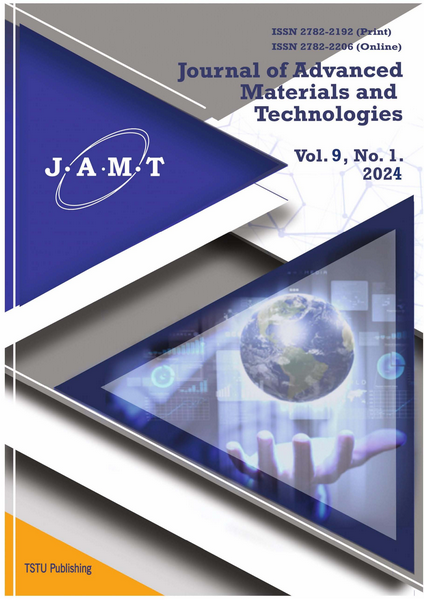Articles
Kinetics of cold compaction of polytetrafluoroethylene-based composite material taking into account structural factors in constant force modes on press plunger or its constant speed
A. Stolin, L. Stelmakh
🗏 : 098-107
DOI: https://doi.org/10.17277/jamt-2025-10-02-098-107
PDF:
Study of the influence of titanium interlayer on formation of AlMg6 – 12Cr18Ni10Ti weld interface during explosive welding
A. Malakhov, S. Seropyan, I. Denisov, D. Shakhray, O. Boyarchenko, N. Niyozbekov, E. Volchenko
🗏 : 108-116
DOI: https://doi.org/10.17277/jamt-2025-10-02-108-116
PDF:
Chemically resistant nanostructured protective coatings for metal surfaces
A. Pchel’nikov, A. Pichugin
🗏 : 117-128
DOI: https://doi.org/10.17277/jamt-2025-10-02-117-128
PDF:
Electron beam lithography using SiO2 as a sensitive layer
D. Zubov, S. Sokolov, E. Eganova, V. Yakovlev
🗏 : 129-140
DOI: https://doi.org/10.17277/jamt-2025-10-02-129-140
PDF:
Theoretical investigation of the interaction mechanism of trialkylamine derivatives with the copper phthalocyanine surface
A. Degtyarev, A. Trishina, D. Rostova
🗏 : 141-153
DOI: https://doi.org/10.17277/jamt-2025-10-02-141-153
PDF:
Sorption dynamics of organic dyes from aqueous solutions using activated carbon derived from peach modified with carbon nanotubes
A. Kadum, I. Burakova, D. Badin, S. Rybakova, A. Timirgaliev, V. Yarkin, T. Kuznetsova, T. Dyachkova, A. Burakov
🗏 : 154-166
DOI: https://doi.org/10.17277/jamt-2025-10-02-154-166
PDF:
Design of carbon dioxide sorbents in the context of the potential energy landscape
V. Chaban, N. Andreeva
🗏 : 167-181
DOI: https://doi.org/10.17277/jamt-2025-10-02-167-181
PDF:



